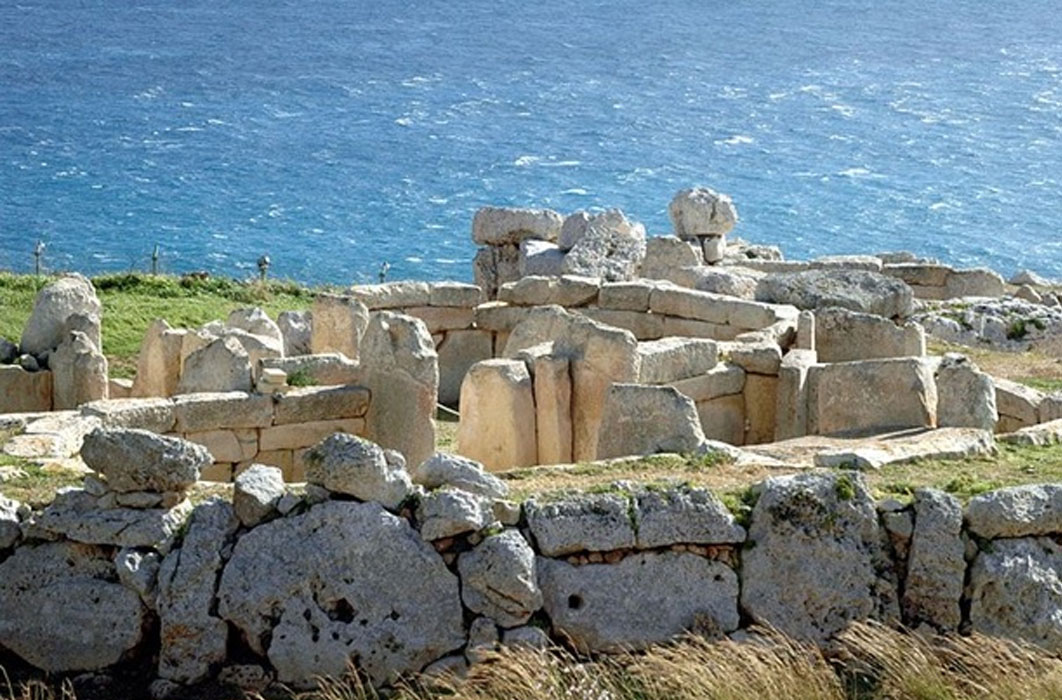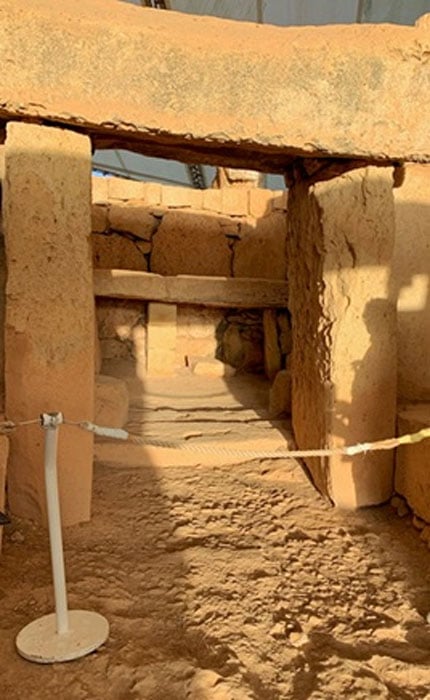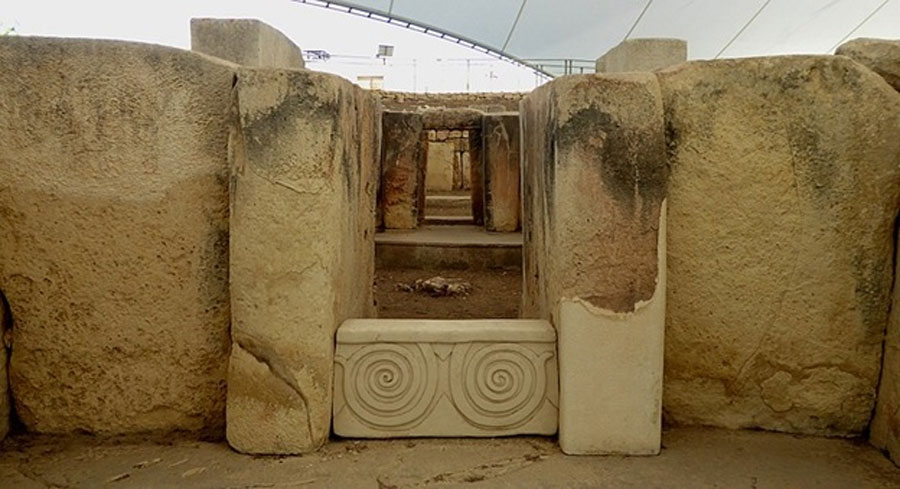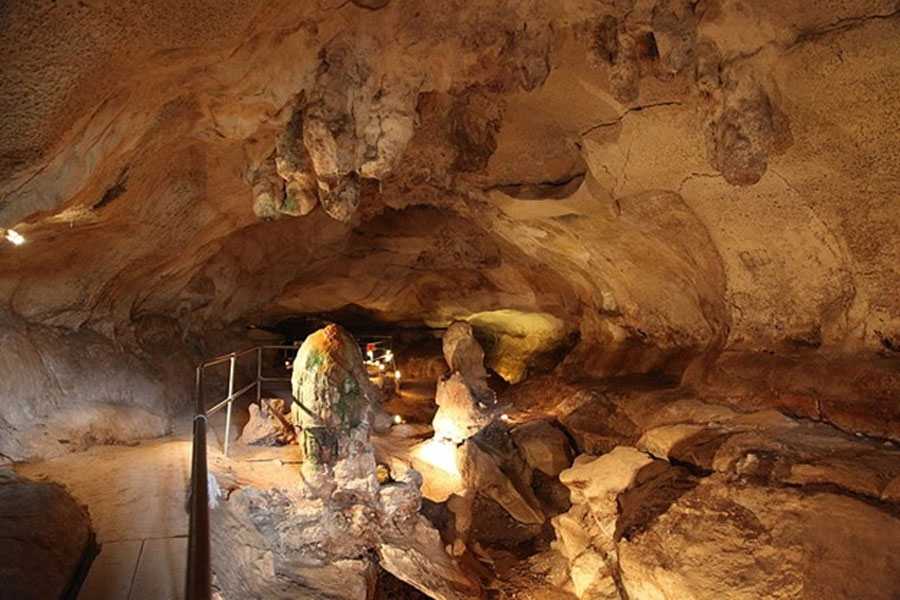
Malta, Shrouded in Megalithic Mystery
The crowd waited expectantly at Malta’s ancient Mnajdra Temple for the spring equinox sun to peek out from behind a nearby hill. Suddenly the sun broke through the low-lying morning mist. Warmed by its light, the honey-colored limestone walls of the partly ruined megalithic temple began to glow. Like liquid gold, a beam of sunlight flowed over the stone-paved corridor until it reached the main altar at the western end. Soon the altar was lit with the blessing of the sun. The Mnajdra spring equinox sunrise had been successfully witnessed in 2019, just as it has been for nearly 6,000 years.

The 2019 rising Spring Equinox sun shines down the central corridor of Mnajdra Temple and touches the main altar at the end. (Image © Elyn Aviva)
That some ancient Maltese temples are aligned to the equinoxes and have internal markers for the solstices (and even a calendar stone) is no longer disputed. But much else about the temples—and about much of Maltese prehistory—remains puzzling, raising more questions and vehemently heated debates than answers. For example: Was Malta really first settled 7,000 years ago by farmers from Sicily? The same first settlers who, without apparent prior experience, 1,000 years later began to erect enormous megalithic temples? And why did they build so many? Surveys indicate some 66 megalithic temples existed on the relatively small islands of Malta and Gozo. Some archaeologists state that the underground Hal Saflieni Hypogeum, which resembles an above-ground temple complete with central sanctuary, was a huge multi-layer cemetery into which some 7,000 (decomposing) bodies were deposited. But was it?
Based on ‘obese’ statues and the interior layout of the temples, some people believe Malta was the site of a powerful Mother Goddess cult. But are the large-bottomed, kilted statues (often headless) actually female, and are the temples proof of a Goddess cult? Numerous limestone plateaus are covered with networks of enigmatic cart-ruts that run parallel, overlap, do ‘U-turns’, and even run down cliffs and under the water. How old are they and what were they used for?

The entrance to the two top apses of the Tarxien Temples in Malta. Spiral engravings can be found on one slab (Ethan Doyle White / CC BY-SA 4.0)
History of Human Habitation of Malta
The Republic of Malta is composed of three main islands (Malta, Gozo, and tiny Comino). It is located at an important crossroads of the Mediterranean, just 80 kilometers (50 miles) south of Sicily (to which it was once attached by a land bridge), 290 kilometers (180 miles) east of Tunisia, and 350 kilometers (217 miles) from Libya. It is the smallest (316 square kilometers /112 square miles) member of the EU and is densely populated—475,000 people live on the three populated islands. Nearly 440,000 of them live on Malta, 33,000 on Gozo, and 10,000 on Comino.
- Forsaken by their Gods, Four Ruins of the Oldest Temples in the World
- The Power of Sound Rediscovered in Prehistoric Barrows and Coves
- Who Kept the Ancient Wisdom of Stonehenge?
The official history is that, although fossilized fauna remains have been discovered on Malta that date back 200,000 years, humans first arrived some 7,000 years ago, traveling by boat from Sicily. After a 1,000 years or so, around 3600 BC, these farmers began building huge limestone temples. The peaceful ‘Temple Builders’ mysteriously disappeared around 2500 BC. The islands received a new, unrelated population at some later time, a completely different community that used copper weapons and cremated their dead. Subsequent settlers, visitors, traders, and conquerors included the Phoenicians, Carthaginians, Romans, Byzantines, North African Arabs, Normans, Spanish, Ottoman Turks, Knights of St John of Jerusalem (the Knights of Malta), French and English. Clearly, the islands are not just a geographical crossroads but also a cultural and linguistic mélange.





